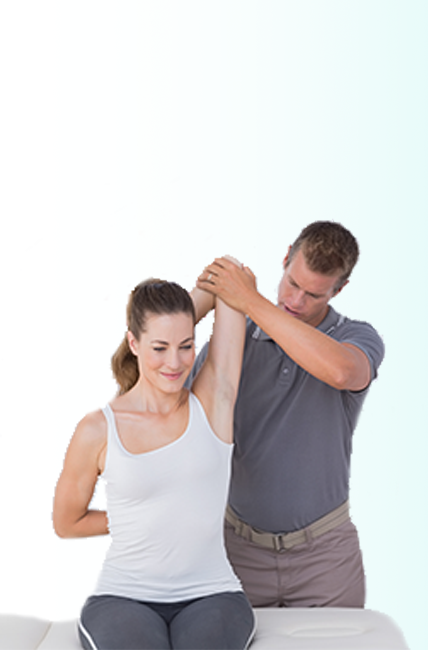

Chiropractic Care for Tendonitis in Anchorage, AK
Better Health Alaska: Experienced Tendonitis Treatment in Anchorage
Are you dealing with tendonitis? Since thousands of tendons are in the human body, it can crop up virtually anywhere. Once it starts, as your Anchorage chiropractor can surely tell you, it’s accompanied by one or more aggravating symptoms. Things like swelling, pain that worsens with movement, and a strange warmth or lump in the affected region.
All these can impact your life to varying degrees: limiting movement; curtailing activities. But fortunately, there are steps you can take to remedy this condition. And Better Health Alaska can help. Since opening our doors in 1998, Dr. Brent Wells and his team have treated thousands of cases of tendonitis. We’ve advised on at-home measures like rest, ice, and exercise, and we’ve also provided in-office care with:
- Chiropractic services
- Massage therapy
- Physical therapy
- And more…
So, if you’re looking for a local chiropractic adjustment near you for tendonitis or some other musculoskeletal condition, schedule an appointment at our office – we can help.

What to Expect at Your Anchorage Chiropractor’s Office?
If you do suffer from tendonitis, although there are home remedies that can help, it’s usually best to get professional guidance from a chiropractor.
Your First Visit
Here at Better Health Alaska, you will be greeted warmly upon entering, and then ushered to your first visit with your expert chiropractor at our Anchorage office. He/she will discuss your symptoms with you, go over your medical history, and then perform a comprehensive exam. This will allow him to make an official diagnosis.
With the above information and a diagnosis in hand, your chiropractor will be able to develop a personalized treatment plan.
Typical symptoms of tendonitis usually consist of:
- Pain that worsens with movement,
- Swelling
- Heat in the affected area
- A lump in the affected area
Other more serious symptoms include a crackling feeling or redness under the skin.
Benefits of Regular Chiropractic Treatment for Tendonitis
Scheduling regular visits to a chiropractor’s office (like Better Health Alaska) is an excellent first step to treating tendonitis. Chiropractor’s have a wealth of knowledge about the types of home measures you can take (amount of rest, ice therapy, etc…) as well as an assortment of in office therapies at their disposal, as well:
- Chiropractic care – to correct misalignments aggravating the tendon
- Physical therapy – to strengthen muscles around the tendon
- Massage therapy – to loosen muscles
- And more…
Although not all of these may be appropriate for every individual, many people have found relief with the application of one or more of these techniques.
At Better Health Alaska, not only will you find a medical team that can treat your tendonitis, but you’ll find a local Anchorage-based chiropractor that takes insurance near you as well. Just reach out.
Visit Better Health Alaska
South Anchorage
- 8840 Old Seward Hwy E, Anchorage, Alaska 99515
- Phone: 907-743-0110
- Open Hours: 9AM to 7PM
Your Anchorage-based Chiropractor Explains: What Causes Tendonitis?
Sudden injuries and repetitious movements. Consider the tendons in your hands if you type for a living like a writer, or your knees if you play basketball every week, or your lower back if you’re constantly carrying things at work. Most tendonitis is caused by overuse, meaning the tendons aren’t given enough time to relax and repair over an extended period of time so they become worn down. Then, of course, we must consider how tendons age with the body and become more susceptible to inflammation as we get older.
What Are the Signs and Symptoms of Tendonitis?
Movement is usually the key indicator, or in other words, moving the muscles attached to the tendon. If you experience pain and it gets worse through your range of motion that’s a sign. If you ever feel like there’s a crackling or grating feeling that’s a serious sign as well. After an injury to the tendon you may see some swelling, it may become hot in the affected area, and you may even see a lump develop. If you see a redness under the skin, that could be blood showing you’ve torn the tendon and should seek medical attention.
Which Body Parts Does Tendonitis Affect?
Well, if we don’t count all the many smaller muscles all over everywhere, there are approximately 1,320 tendons in your body. As such, there are far too many potential places for tendonitis to strike to list here. It often depends on your activities, lifestyle, health, etc. The most common include Achilles tendinitis, shoulder tendons, tennis elbow, the hands, wrists, and knees. What’s important is how it’s impacting your life. The first step is getting a proper diagnosis.
How Long Does Tendonitis Last?
It depends on your particular situation, how you and your body reacted to the initial pain (rest, heat & cold packs, etc.) and so on. For more severe cases we may get the impacted area bandaged up, put it in a splint or brace, and give you some support to limit the usage of those muscles. Truth is, if you don’t rest (to a degree), it could get worse and lead to longer more drawn out complications. At a minimum, wait for the inflammation to die down before you start trying to get active again.
How to Treat Tendonitis?
Other than rest? Better Health Chiropractic offers a comprehensive set of options ranging from chiropractic services to massage and physical rehabilitation therapies. At home, you can use rolling and myofascial release, function-strength conditioning exercises, and ice. Addressing any underlying causes of tendonitis (misalignments, strains, joint issues, etc.) is essential for recovery. Treatment will vary according to the needs of each patient.
How to Prevent Tendonitis?
First, be attentive about stretching your muscles and joints before strenuous physical activity. It is incredible how often people wait until they experience a tendon injury before taking stretching seriously. Then it’s about practicing good general health habits and providing yourself with enough time to recover (take breaks once per hour from repetitive motions and sitting). The tendons need to rest, as do your muscles, or there can be no improvement in physical function.
Stretches & Exercises for Tendonitis
Whether it’s a tendon in your calf or lower back, there are a ton of ways to stretch without making things worse. In fact, stretching and specific types of movements can hasten your recovery and ensure you don’t become stiff or lose range of motion. There are far too many to list here, but as part of working with any of our Alaska chiropractors, massage therapists, or physical rehabilitation specialists in Anchorage, you’ll learn all about the options and how to perform them.
Conditions Helped by Chiropractors:
Same-Day Chiropractic Appointment. 10-Minute Wait Promise.
Better Health Alaska Chiropractors has helped thousands of patients get their life back through safe, effective, and cutting-edge treatments like the Alaska Back Pain Protocol. We use a multi-pronged, non-invasive approach to treat different conditions. And it’s done at a reasonable cost. We accept many types of insurance, and most insured patients pay $25 or less per visit. We even have options for the uninsured.


